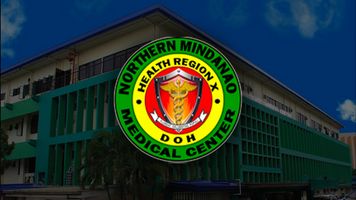Title Page
-
Conducted on
-
Prepared by
-
Location
STANDARD PRECAUTIONS
Hand Hygiene
-
High visibility signs on educational literature on hand hygiene
-
Availability of hand washing area (with soap & water) and/or touch-free/ personal hand sanitizers and hand dryers/disposable hand towels in the following areas and if station staff are performing hand washing regularly*
-
Station 1
-
Station 2
-
Station 3
-
Station 4
-
Station 5
Use of PPE
-
Removal of all jewelry, watches followed by hand washing
-
Proper sequencing of DONNING PPE upon room entry for Level 2 as follows: N95 mask - googles/face shield
-
Remove and replace any soiled or non-fitting mask. N95 mask loops are hooked appropriately around the ear
If doing aerosol-generating procedures using N95. Filtering facepiece respirators are fitted to the nose, extend chin and the respirator strap placed at the crown of the head and base of the neck and user seal check performed
-
Googles/ face shield
-
Hand hygiene performed prior to putting on gloves
-
Clean gloves cover the cuff (wrist) of isolation gown
-
During Doffing, always wash hands after removing N95
-
Remove all used PPEs as soon as duty ends properly discarding at the designated area before exiting
-
Used PPEs are placed in appropriate waste disposal area and properly sanitized
Use of Needle sticks and Sharp Objects
-
Proper orientation of health workers on the use and disposal of sharps including reporting and monitoring of needle pricks
-
Practice aseptic techniques during usage of needles (with IV insertion or blood extractions)
-
Never recap used needles but discard in proper sharps disposal
TRANSMISSION-BASED PRECAUTIONS
-
Appropriate patient placement in a single patient space, observing at least 6 meter distancing of ward beds
-
Limit to 1 watcher per patient
-
At least 1 meter of physical distancing for station consults. Floors has markers
-
Patients and watchers wear masks at all times
-
Proper cough etiquette is observed at all times
-
Limit watcher movement inside the wards
-
Equipments commonly used for multiple patients is cleaned and disinfected every after patient use (ex.nebulizer, suction machine)
-
Avoid ambubagging, instead directly attached patient to mechanical ventilation when immediately available
-
Use aerosol boxes and nebulization chambers (should be present at the station at all times)
ENVIRONMENTAL CONTROLS (STATION)
-
Clean and disinfect all surfaces (tables, chairs, floors and other high contact areas) every 4 hours at least
-
Fans, curtains, blinds, telephones and computer keyboards are being cleaned
-
Waste is covered and segregated
-
Station toilet are being cleaned and free from extraneous items
-
Availability of PPE disposal container with cover
-
Has designated person to regularly collect and dispose wastes and used PPEs
-
Disposal of sharps to properly designed sharps container
-
Proper usage of work areas; eating of staff should be done at pantry area or other designated area when available
ENVIRONMENTAL CONTROL (WARD)
-
Ventilate the room to maintain >12 Air Exchanges
-
Waste containers are properly covered and labeled
PATIENT CARE (IF APPLICABLE)
-
Catheter Associated Urinary Tract Infection Checklist
-
Ventilator Associated Pneumonia Checklist
-
Surgical Site Infection Surveillance Checklist
-
Prevention of Central Line Associated Blood Stream Infection Checklist
moments of hand hygiene include:
-
before touching the patient
-
before aseptic procedure
-
after body fluid exposure risk
-
after touching the patient’s surroundings
-
after touching the patient
-
after doffing of PPEs















